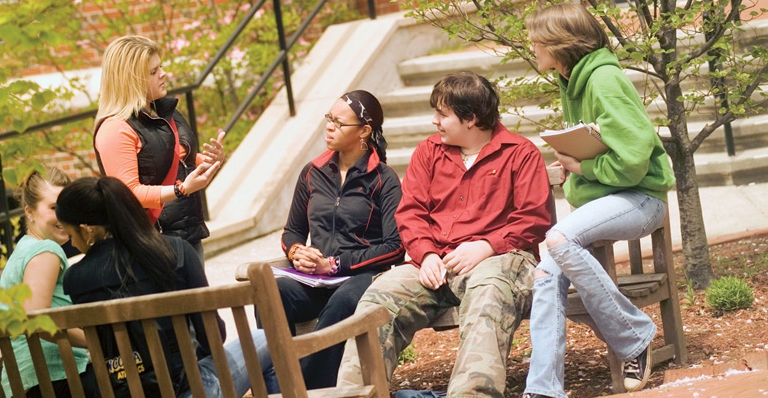
College students enter the university as wide-eyed high school graduates and leave as independent young men and women. The interests, needs, and concerns of a college student evolve tremendously from year to year, and your marketing message and tactics need to take those differences into consideration. But if your marketing treats all college students the same, you may be missing entire segments of your target market.
How do college students differ from one year to the next? Here’s a quick overview of the student classes and how brands need to adapt their marketing for each one.
Freshmen
Freshmen are exploring. This is the discovery part of their life, where everything is new. They’re trying new things, and in that trial period they’re going to figure out what they like and don’t like, what they can afford, how certain products speak to them, how those products fit into their lives. 88% of freshmen say their college experience has opened them up to entirely new and diverse things.
This poses a great opportunity for brands. We often tell brands to participate in the back-to-campus events. Yes, there are a ton of other brands there and lots of noise to compete with—but if you’re not there, your competitor will be. Think of it as a great way to see how your product is received. Take advantage of that moment and use it to think about next steps—not a one-and-done activity, because you won’t get any traction with freshmen that way.
Because freshmen spend so much time exploring and discovering, you’ll need to have a consistent marketing effort for the entire year.
Sophomores
Sophomores have been on campus for a year, and they’re no longer in the exploration phase. They know the ropes, and they know their school inside and out. Sophomores understand how to navigate everything that the freshmen don’t, and they’re savvy about what they like and don’t like.
Many sophomores are still living in dorms, but they’re probably thinking about where they’re going to live next year. They’ve cemented their school relationships, and they’ve established their social media presence online. Sophomores are highly involved in organizations—they’re the most involved group on campus, with a participation rate as high as 95%.
Sophomores are perfect brand ambassadors, because they understand their campus and they’re well on their way to figuring out what they want to do with their lives. Take advantage of that by establishing a presence where student organizations are active. Make it easy for students to interact with you on social media, and provide opportunities for them to engage with you and share your posts with their network.
Juniors
Juniors are preparing for internships, and by the time they’re seniors, over 60% will have had at least one internship. They’re now thinking about what they want to be doing with the rest of their lives after graduation. The horizon is coming into view. As a result, they’re the group that’s least engaged in organizations.
Because most juniors are living off campus, getting involved with off campus housing is important for brands. Career fairs are also a great way to connect with these students. Shape your message to speak to the questions and topics that occupy their minds most at this time.
Seniors
Seniors are much like juniors—they’re focused on finishing school and securing a job, and mentally they’ve started checking out of college already. But seniors are feeling the pressure to find a job more than juniors are, and some of them rejoin student organizations to add more experience to their resume.
Although seniors may be checking out of college in some ways, it presents a new opportunity for brand marketers. Your messaging should focus on the next steps of their lives, as much as possible. How can you benefit them as they move beyond college? How will you be there for them throughout adulthood? Once they’re on their own, how will your product be something they can continue to rely on?
The best way to connect with seniors is online, or by getting involved in events that attract seniors. Career fairs are extremely popular at this stage—about 88% of college seniors nationally attend career fairs.
What opportunities have you been missing out on? Fill in those gaps! If you’re struggling with understanding the mind and motivations of different student classes, talk to us—we have our finger on the pulse of college life.
Next Steps
- Follow us on Twitter, Facebook, and LinkedIn.
- Want more great content to boost your campus marketing campaigns? Subscribe to our blog!
- Ready to get better results with campus marketing? Contact us!
